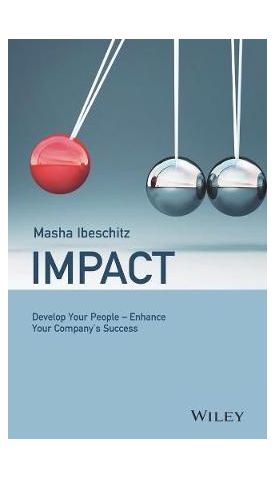אנו משתמשים ב-Cookies כדי לשפר את החוויה שלך. כדי לקיים ההנחיה החדשה של e-Privacy, עלינו לבקש את הסכמתך להגדיר את ה-Cookies. קבלת מידע נוסף.
183.00 ₪
Impact - Develop Your People - Enhance Your Company's Success
183.00 ₪
ISBN13
9783527509669
יצא לאור ב
Weinheim
זמן אספקה
21 ימי עסקים
עמודים
183
פורמט
Hardback
תאריך יציאה לאור
12 בספט׳ 2018
Employee development isn't magic. With a few coaching fundamentals, which any executive can easily learn from this book, it is possible to develop employees into top performers who will effectively contribute to thebusiness success of their company. In her book, Masha Ibeschitz, an expert who is at home in C suites around the world, shows how coaching works in day-to-day business. Her book is not meant for consultants or professional coaches, but for anyone who wants to practice agile leadership and give employees positive, effective guidance.
In 10 chapters, Impact sheds light on how coaching tools can be used to develop employees' potential. It answers questions such as: What is the value of coaching discussions? What exactly is coaching? What occasions are appropriate for coaching? Who is coachable? How does a coach trigger a solution? How does a coach make astute use of different types of questions?
The starting point is always a story from the author's own coaching experience, anonymized and altered to disguise real-life details. The take-aways relevant to the topic of each chapter are presented as briefly as possible and as extensively as necessary; info boxes provide a quick overview of specific concepts. Each chapter concludes with a summary of key points.
| עמודים | 183 |
|---|---|
| פורמט | Hardback |
| ISBN10 | 3527509666 |
| יצא לאור ב | Weinheim |
| תאריך יציאה לאור | 12 בספט׳ 2018 |
| תוכן עניינים | Foreword 9 Introduction Why managers should also be development guides 11 If you use coaching tools to give people impetus - that is, inspire and motivate them to develop their potential - you can strengthen the whole organization while dedicating more time and energy to the strategic management of your business. This book shows you how. Chapter 1 The strategy dilemma - or: How to make time for your Priorities 15 If you neglect strategic tasks today, they will hit you in the face tomorrow - and more so in the VUCA world. Here are some ideas for new solutions. Chapter 2 Engaging your staff through communication - or: Please use the elevator! 31 To trigger a certain response, you need to engage people. It helps to have a basic understanding of different personality types - and to know the corresponding approaches. Chapter 3 How to increase value contributions - or: The blessings of coaching 47 Every individual has hidden potential. Coaching is one way to develop that potential and increase a person's value contributions. Chapter 4 Coaching occasions - or: Can I actually do something myself? 63 The coaching toolbox is big and colorful. If you know the basics, you can provide people with valuable impetus in many situations. This may accomplish much more than traditional people development events. Chapter 5 Helping people help themselves - or: Just ask the right questions 79 If you know what approaches are appropriate in which situations, you can choose among them dynamically - almost as though you were moving a slider. That is a key part of agile leadership. Chapter 6 Who is coachable? - or: You can't make pigs fly 95 Everyone is coachable, but not in every situation. Appropriate skills and resources are key for people to help themselves - after they've been given the appropriate impetus. Chapter 7 Making coaching possible - or: Proper tool application is key 109 A development guide always makes sure to create the right setting for conversations with employees. Trust is the basis; questions help establish clarity. Chapter 8 Finding solutions - or: When people don't know what they know 125 If you assume people know more than they are aware of, you can help them solve their own problems - with courage and creativity. Chapter 9 Tools and techniques - or: No matter what I use, it will work! 141 Helpful tools and techniques abound - and it doesn't really matter which ones you choose. What matters much more is your attitude: the key is to switch from "telling" to "asking." Chapter 10 Problem-solving in all directions - or: Back to the future 159 Agile problem-solving considers the past, the present, and the future - each as thoroughly as needed in any given situation. The focus is on what people agree on as the desired future state of things. Closing remarks 175 Further reading 177 Thanks! 179 About the author 181 Index 183 |
| זמן אספקה | 21 ימי עסקים |



Login and Registration Form